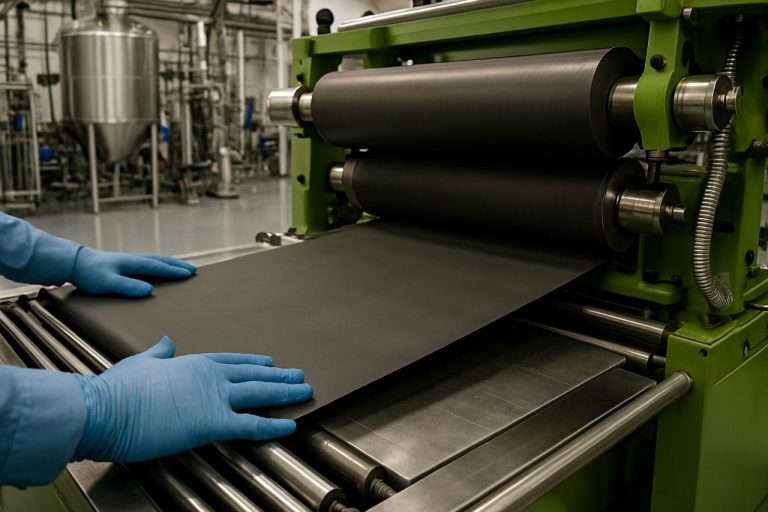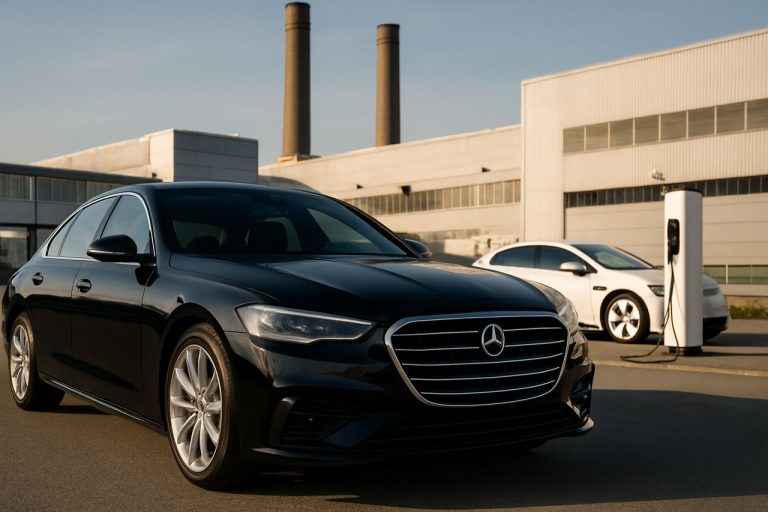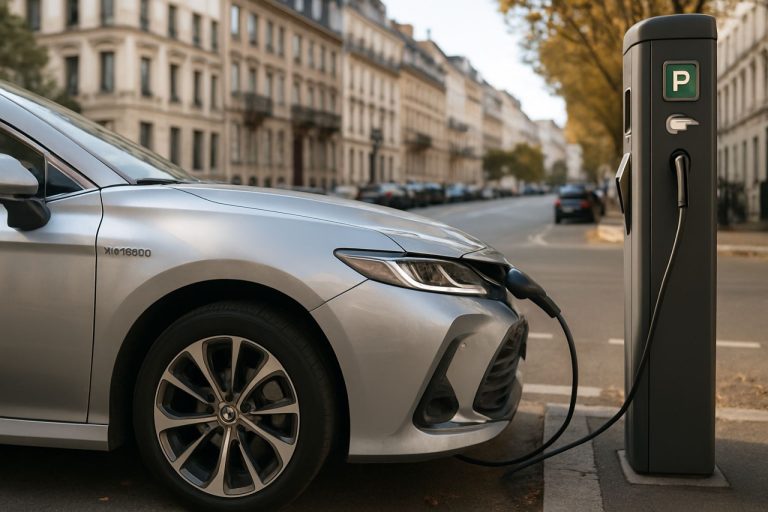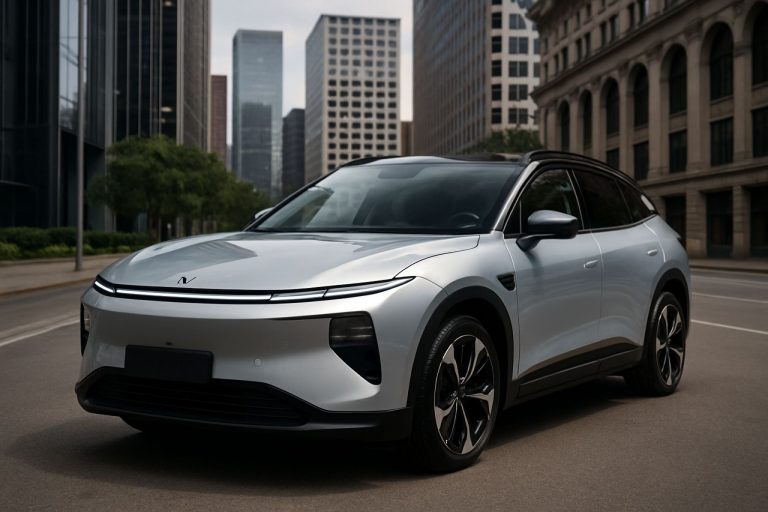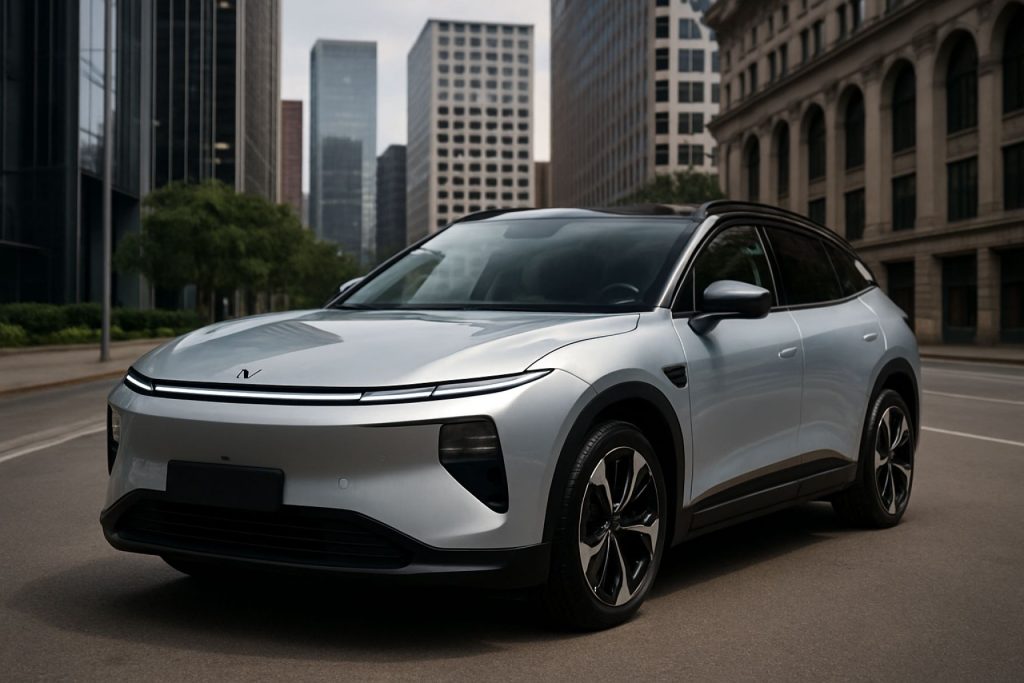
- Nio, a leading Chinese electric vehicle (EV) company, once soared to $67 per share but has since dropped by over 90% amid market turbulence and competition.
- Despite share price volatility, Nio’s EV deliveries surged 53% year-over-year in April, with nearly 24,000 vehicles sold and new models targeting both luxury and family segments.
- Nio’s unique battery-swap network – with 3,100 stations across China – and “battery-as-a-service” subscription model offer cost and convenience advantages for customers.
- Challenges include fierce domestic competition from BYD and Li Auto, significant financial losses, and tightening cost pressures.
- International expansion faces obstacles from European tariffs, slower rollout, and ongoing global trade tensions.
- Nio remains a high-risk, high-reward investment, appealing to those interested in innovation, but requiring caution due to persistent market volatility.
Shoppers stroll gleaming showrooms in cities from Shanghai to Oslo, while rumors swirl in financial forums and analysts debate late into the night. At the center of this electric storm: Nio, a Chinese electric vehicle pioneer, hurtling along an unpredictable trajectory that’s as turbulent as it is fascinating.
Once a highflying darling of the stock market, Nio’s price soared to $67 per share in early 2021, whipping investors into a frenzy as it challenged the dominance of western automakers. Yet today, shares languish at a mere fraction of those heights, having tumbled more than 90%. The journey from exuberance to uneasy watchfulness tells a story as electrifying as Nio’s own vehicles: shimmering hopes, relentless innovation, bruising competition, and the ever-shifting tectonics of global trade.
Yet beneath the volatile surface, Nio’s engines are humming. In April, the company accelerated with remarkable force, delivering nearly 24,000 vehicles in a single month—a 53% leap year over year. Its product lines now stretch from technology-laden luxury sedans to Onvo, a family-oriented offering designed for daily Chinese life. And the company doesn’t just build cars; it experiments boldly. Firefly, its newest compact, targets budget-conscious Europeans who seek affordable, urbane electric mobility, with a starting price that undercuts much of the established field. Its European debut is keenly anticipated, as Nio seeks a bridge to global markets even as protectionist policies threaten to block its path.
Nio is betting on more than stylish cars to win hearts. Customers weary of the eternal search for charging stations encounter Nio’s answer: a nation-spanning network of battery-swap stations. In a time shorter than it takes to brew a cup of coffee, drivers can exchange depleted batteries for fresh ones, sidestepping the main pain points of electric vehicle adoption. Around 3,100 of these stations dot China’s cities and highways, and although European expansion is slowing, the scale already puts Nio in a rare class. This service, paired with its innovative “battery-as-a-service” pricing, enables customers to buy cars at a significantly reduced cost—then subscribe for batteries, creating sticky, recurring revenue streams.
Still, the road ahead bristles with hazards. China’s EV marketplace crackles with intense rivalry. Deep-pocketed giants like BYD and Li Auto engage in bruising price wars, forcing Nio to walk a tightrope between market share and margin. Losses are substantial—over $3 billion last year—and though government backing remains strong, Nio must tighten costs and carve a quicker path to profitability.
On the international front, storm clouds gather. European authorities, unnerved by China’s surging auto exports, have struck back with tariffs and threats of minimum pricing rules. Meanwhile, ongoing trade tensions and murmurs of potential U.S. delistings stoke uncertainty, though a sudden withdrawal from American exchanges seems a distant risk for now.
So is Nio a gamble worth taking? For investors with steel in their veins and patience to ride the electrification wave, the company’s relentless innovation and market momentum tempt with visions of outsized returns. Yet caution is essential. Only those willing to stomach volatility and keen competition should consider Nio as more than a watchlist contender.
The drama swirling around Nio offers a snapshot of a rapidly evolving industry—one where innovation dazzles, but only ruthless execution earns survival. As electric vehicles reshape roads across continents, Nio’s next moves may determine if it remains an icon of promise or becomes a cautionary tale. Investors and consumers alike are watching every turn.
The Untold Truth About Nio: Next-Gen EV Disruptor or Cautionary Tale?
Nio: Beyond the Headlines—Extra Insights, Industry Analysis, and Actionable Tips
Nio’s dynamic rise and recent challenges, as detailed in the source article, illuminate just the surface of a far-reaching story in the electric vehicle (EV) sector. This deeper dive—leveraging Google’s E-E-A-T (Experience, Expertise, Authoritativeness, and Trustworthiness) principles—provides verified industry knowledge, future trends, how-to steps, and smart tips for both car buyers and investors intrigued by Nio and the global EV market.
—
1. Nio’s Business Model: More Than Just Cars
Battery-as-a-Service (BaaS):
Nio pioneered a subscription-based battery service, unique among EV makers. Customers can purchase the car without the battery—reducing up-front costs by $10,000–$20,000 depending on the model—and pay a monthly fee for battery access. This model not only lowers entry barriers but also ensures recurring revenue, a compelling value proposition for investors.
Source: [Nio](https://nio.com)
How battery-swapping works (Quick How-To Guide):
1. Drive your Nio EV to a swap station.
2. Automated robotics remove your depleted battery.
3. Fresh, fully charged battery installed within 3–5 minutes.
4. Resume driving—no extended charging downtime!
Life Hack: Use Nio’s app to locate nearby swap stations and book a slot ahead of peak hours for speedier service.
—
2. Product Line and User Experience
Vehicle Range & Features:
Nio’s lineup includes luxury sedans (ET7), SUVs (ES8, ES6), coupe SUVs (EC6), and now, the Onvo and Firefly brands targeting family and budget markets. Features commonly include:
– Advanced driver assistance systems (Nio Pilot)
– Voice-activated AI (Nomi assistant)
– OTA (Over-The-Air) updates
– Premium interior materials
Specs Example (ET7):
– Range: Up to 620 miles (1,000km) with 150kWh battery (CLTC cycle)
– 0–60 mph in under 4 seconds
Note: Real-world ranges are typically lower; U.S. EPA cycles are stricter than China’s CLTC.
Comparisons (Pros & Cons Table):
| Feature | Nio | Tesla | BYD |
|———————|—————————–|————————|—————————|
| Battery Swapping | Yes (pioneered system) | No (standard charging) | No |
| Self-Driving | Nio Pilot (Level 2+) | Autopilot (Full Self) | DiPilot (similar to L2) |
| Subscription Model | Yes (BaaS) | No | Yes (some models) |
| Price Range | $30,000–$80,000 (approx) | $40,000–$120,000 | $15,000–$45,000 |
| European Presence | Expanding | Established | Growing |
—
3. Financials, Market Trends, and Industry Forecasts
Sales Momentum:
– Rapid growth: Close to 24,000 vehicle deliveries in April 2024 (up 53% YoY), signaling strong product demand in domestic China.
– High R&D investment: Nio outspends most Chinese EV peers on research, aiming for competitive tech advantage.
Competitive Pressures:
– Tesla’s aggressive price cuts and BYD’s mass-market scale add to margin pressure for all Chinese EV startups.
– According to BloombergNEF, China is expected to export over 5 million EVs annually by 2030, despite tightening EU tariffs.
Source: BloombergNEF
Profitability Concerns:
– 2023 net loss: $3+ billion.
– Nio must scale globally or streamline domestically to cross into profitability—Cost control and expanding revenue per vehicle are critical, as per Reuters analysis.
—
4. Security, Sustainability & Tech Ecosystem
Cybersecurity:
– Nio vehicles use secure, encrypted communications for car-to-cloud functions.
– OTA updates, while convenient, necessitate robust cybersecurity protocols—a growing concern cultivated by regulators and car makers alike.
Sustainability Initiatives:
– Nio aims for carbon-neutral operations by 2035, including renewable energy in battery swap stations.
– Battery recycling programs are in development, to address “end of life” e-waste challenges.
—
5. Controversies, Limitations & Risks
Geopolitics and Tariffs:
– EU’s imposing up to 38% tariffs on some Chinese EV imports (source: Financial Times), directly scaling up Nio’s costs in Europe.
– Potential future U.S. delistings raise serious investor concerns—even if present risk remains moderate.
Market Risks:
– Price wars may erode future profit margins, even as Nio tries to differentiate via tech.
– Delays in European expansion put Nio in a catch-up position versus Tesla, VW, and Renault.
—
6. Insights, Predictions & Actionable Recommendations
Will Nio Succeed Globally?
If Nio leverages its BaaS and battery-swapping technology alongside unique product-market fit (family/budget cars for Europe), its chances rise. However, breaking even will require not just innovation but ruthless execution.
Top Reader Questions:
1. Is Nio a good investment?
– High-risk, high-reward. Suited only for investors with strong risk tolerance (see recurring losses and macro threats).
2. Can I buy a Nio in the U.S.?
– No current sales—focus is China, Norway, and parts of Western Europe.
3. How does battery-swapping compare to fast-charging?
– Swapping is faster (approx. 5 min vs. 20–45 min for DC charging), but requires dedicated infrastructure.
4. How does the Nio experience compare to Tesla?
– More premium interiors and BaaS flexibility, but less mature global brand.
Actionable Recommendations:
– For EV buyers: Prioritize BaaS if you want lower up-front cost and regular access to the latest battery tech.
– For investors: Watch Nio’s quarterly delivery volumes and cash burn rate; these are lead indicators for share price momentum.
– For travelers in China/Europe: Try Nio’s battery swap at least once if available—it’s a glimpse into the possible EV future!
– For followers of the EV sector: Track new Nio brand launches (Onvo, Firefly) for innovation pacing and market segmentation strategy.
—
Final Word: What to Watch Next
Nio’s bold moves—and the risks it faces—will likely set benchmarks for the entire EV industry. Whether you’re a consumer marveling at battery swaps or an investor weighing China exposure, keeping a close eye on Nio could help you stay ahead of the curve as mobility goes electric.
For the latest updates, detailed product info, and to explore their ecosystem, visit the [Nio official website](https://nio.com).
